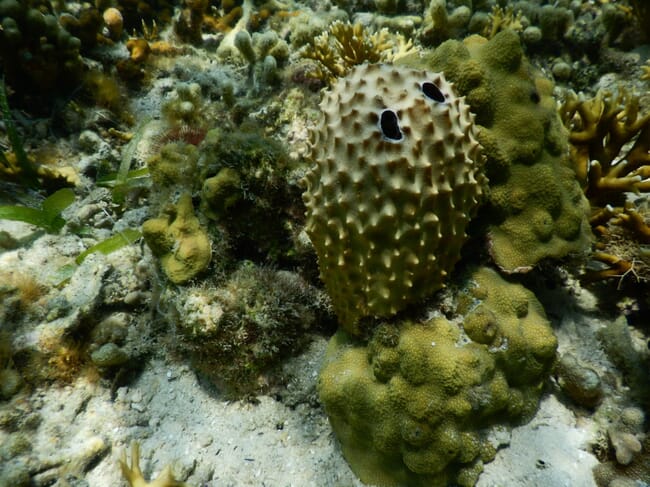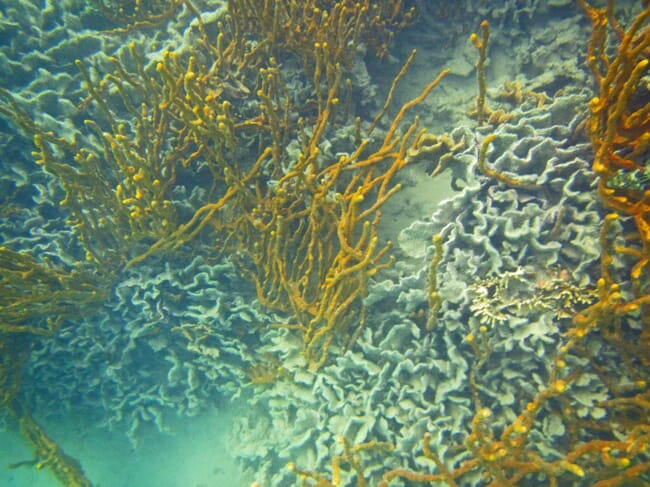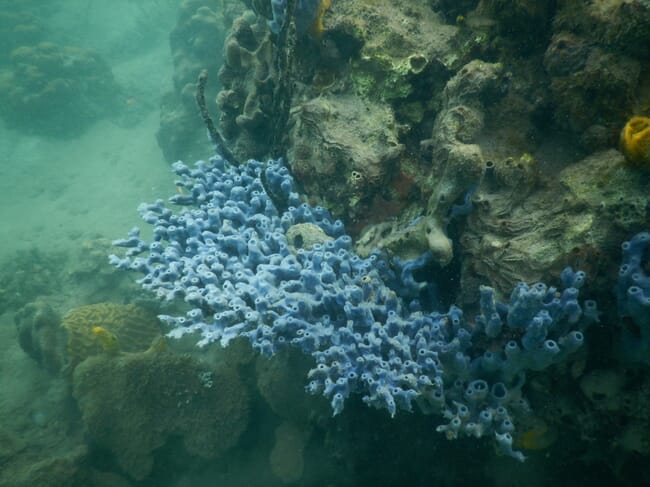Coral bleaching due to thermal stress has been dated as early as 1782. With more recent reports of 25% of the Great Barrier Reef being destroyed due to the recent El Niño (25,000 ha), and 40% of all corals on worldwide basis having "disappeared", it is hard to fathom there is so little funding available for coral research. In the Caribbean area of Bocas Del Toro in Panama, the abundant colorful reef sponges thrive, yet research and observations indicate that this difference is beyond increased stress resistance due to high ocean temperatures associated with El Niño events.
Recently published research has shown that an average increase of 1.9 oC over a period of 6 months caused massive bleaching and mortality of corals in the Chiriqui Bay of Panama (Reef Encounters, December 2016). This bleaching also resulted in various changes in coral color due to change in symbiotic algae. Meanwhile previous reports indicate that an increase of 3oC may cause up to 100% mortality at the Great Barrier Reef.

© Bill and Gladys McGraw.
Coral reefs are generally accepted to be paramount to the survival of at least 25% of all marine life. In Bocas del Toro there is an environment that hosts 120 species of sponges of amazing color, 23 of which are common everywhere in the area. Yet directly across the isthmus of Panama, one would be lucky to find a single sponge anywhere in the islands of Secas, Coiba or Pearl – but is this due to the detrimental effect of the El Niño in the Eastern Pacific Ocean?
The increase in coral sponge abundance worldwide has been documented multiple times. Thus it appears that sponges have an adaptive advantage that allows them to have better survival to thermal stress compared to corals. Coral reef sponges have endo-symbionts, much like corals, but are known to be more resistant to bleaching due to a long evolutionary adaptation with their algal partners.
A study of coral reef assemblages on the coast of Brazil demonstrated constant survival of reef sponges during the severe El Niño of 1998. Sponges have been reported in various areas to occupy areas where corals once thrived but now decimated by increased water temperatures. Incredibly, sponge growth actually increases in response to warmer water. An epigenetic response provides efficient methods used to combat the ill effects of increased water temperatures, such as the increase in the production of antioxidants and induction of heat shock proteins.
Observations at San Blas Islands on the Atlantic side of Panama show evidence of the survival of an orange rope sponge in an area of dead hard coral which may be due to other factors besides better resistance to increased temperatures. Sponges obtain most of their nutrition from filter feeding plankton, which typically increase in response to augmented nitrogen and phosphorous from sources such as sewage effluent and chemical fertilizers from agriculture. These same effluents increase nuisance algae species that compete with corals, such as the common instance of suffocation of corals by a blanket of hair algae.
So why are there no sponges on the coast of Pacific Panama? Evidence exists for the survival and growth of Caribbean sponges in Pacific waters. A study of this comparison shows the existence of Pacific sponge predators that consume the few cryptic sponges that can be found and may have a negative effect on the development of sponge species along the Pacific coast of Panama. This is likely a major factor reducing sponge abundance in an area that has a periodic temperature increase due to El Niño and should be a place where coral reef sponges thrive.

© Bill and Gladys McGraw.
Sponges are beneficial for the development of coral reefs
Sponges are diverse, with over 8,000 species, of which less than 1% examined contain over 40,000 different microbes. The total number of documented species of corals barely totals 800. Although sponges can out-compete corals in areas of higher temperatures and nutrient loads, in unstressed environments sponges and corals are found growing together on reefs.
Sponges protect, feed and aid the construction of coral reefs through a variety of methods and filter an astounding 24,000 liters of seawater/hr/kg of biomass, removing over abundant nitrogen and phosphorous fueled algae and bacteria as well as detritus. While cleaning the environment with this filtering ability, sponges at the same time shed specialized cells that are a food source for other reef inhabitants such as detritivores. Sponges also aid coral reef development by binding and physically protecting corals from damaging excavating organisms. Therefore they can be considered the mother of the coral reef and their proliferation in warmer ocean water a benefit for coral reef development.

© Bill and Gladys McGraw.

